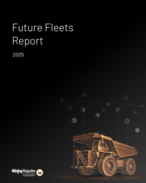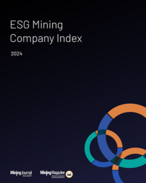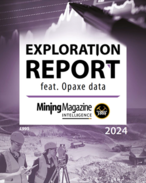This article is 17 years old. Images might not display.
Published in September 2007 Australian Longwall Magazine
These days a ventilation officer's role is diverse, with responsibilities ranging from on-shift management of ventilation and gas, to long-term ventilation planning and modeling. While a ventilation officer's top priority is the stability of the goaf atmosphere, there are many day to day distractions as well as physical limitations that restrict the ventilation officer's ability to constantly track the goaf atmosphere.
Broadmeadow ventilation officer Mick Loney says history has shown the ventilation officer (and other statutory officials at a mine) can be drawn into the day to day operation of the mine, and the goaf atmosphere can deteriorate undetected to a dangerous level. Add to this that a ventilation officer's job is usually five days a week, which means from Friday afternoon to Monday morning gas samples are not being checked at a higher level.
To overcome that risk in the traditionally spontaneous combustion-prone Goonyella Middle Seam, Broadmeadow uses Joncris Sentinel Service's mine atmosphere interpretation and monitoring support service. "Broadmeadow uses Joncris to assist with managing the risk of spontaneous combustion to the business and the men underground," Loney said.
"The Joncris service is invaluable as it guarantees that every sample is scrutinised with the highest level of detail. Joncris is checking every sample, basically carrying out an external audit of each one - checking the quality of the sampling by the ERZ controller through to the analysis by the CRO and the accuracy of the gas chromatograph (GC). I know that if something is awry I will be called about it within hours of the sample being taken underground."
Loney added while outsourcing its atmosphere monitoring worked for Broadmeadow, it was up to the management of each mine to assess the risk spontaneous combustion poses to their business and their workforce, and put appropriate controls in place. "External mine atmosphere monitoring services are not for everyone; it is one way of managing the risk. While I am a believer in the importance of these services, it is up to the management team at each mine to assess if the level of risk warrants the attention to detail that Joncris (or a similar service) offers."
Another longwall operation utilising outside mine atmosphere monitoring services is Peabody Pacific's North Goonyella, who have opted to use Joncris' service to reduce risk to the business.
"The monitoring provides an independent analysis of our data. The mine's monitoring systems utilise trigger levels that require certain actions to be taken if a trigger is activated. Joncris provides additional information through analysis of a multitude of variables which may indicate abnormal trends are developing and thus allowing proactive actions to be taken," North Goonyella technical services manager Owen Salisbury said.
"It also allows us to get an expert opinion on a particular trend or situation and discuss our management approach to ensure it is being dealt with effectively."
Joncris operations manager Michael Brady said by using outside monitoring services mines can ensure the risk of spontaneous combustion is maintained at acceptable levels.
"Ideally our aim is to supply this unique service to all underground mines but unfortunately many operators see this as an additional expense rather than proactive risk management," he said.
Joncris sets up ventilation stations and monitoring points at selected points throughout the mine, bag samples are collected and analysed without undue delay by a GC. Joncris then processes the results through its database - the Sentinel Interpretation System. The system is designed to examine 21 indices for each sample and to produce a trend for selected indices or all 21 if required.
"This enhances our ability to recognise and quantify the subtle changes that can occur in the mine atmosphere. We are convinced that it is the subtle changes that are the early warning signs of accelerated oxidation that have been consistently missed in the past," Brady said.
The subtle changes can be influenced by strata anomalies, geological or geotechnical anomalies which affect coal quality, intersection of surface to seam boreholes, and inseam gas drainage holes. All these can allow oxygen in and lead to the early stages of oxidation.
Joncris returns their database's results in a series of graphs with comments to the mine, usually the same morning the sample is collected and ideally before people enter the mine for the next shift.
Gas alarm triggers are set for each site using statistical analysis initially reviewing a minimum of three months of credible data. "From this we recommend to site their normal background values for a range of gases and ratios and triggers based on standard deviations from normal, and these are reviewed periodically, depending on the life of the longwall block, but ideally every three months."
During interpretation Joncris takes into account surface temperature and humidity, barometer, fan pressure and ventilation pressure differential across seals, sealed areas and workings. They must also allow for the sampler (if collected by a person), sample location, temperature at the sample site and the analyser's effectiveness.























